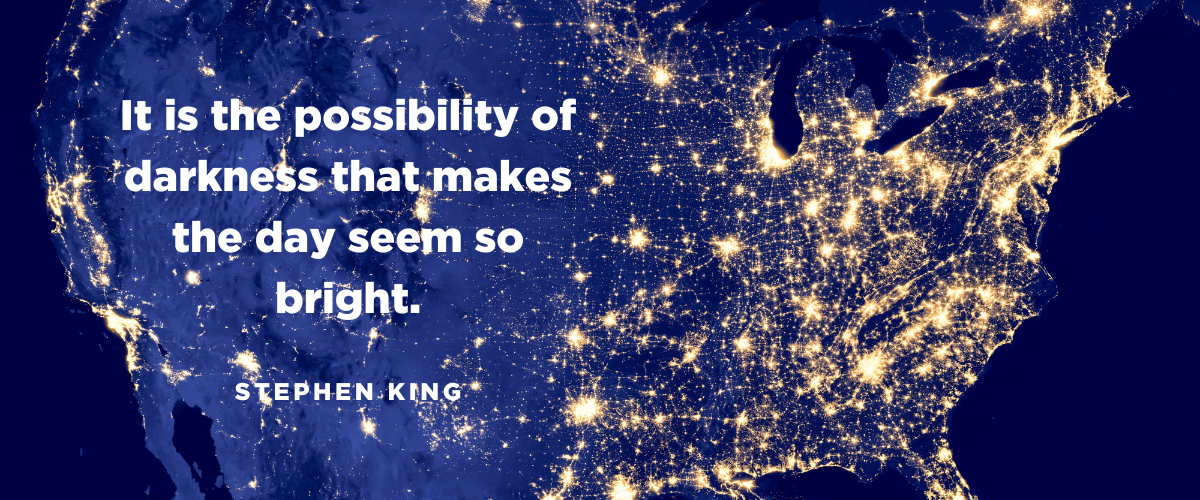
The season of lights is upon us, and millions upon millions are paying the price – some even with their lives. Bright skies have become commonplace in modern society, and a necessary part of life as we know it. I don’t need to tell you how drastically artificial lighting has changed the course of history. Since the invention of the light bulb mankind has literally sprinted toward innovation in every facet imaginable. But at what cost?
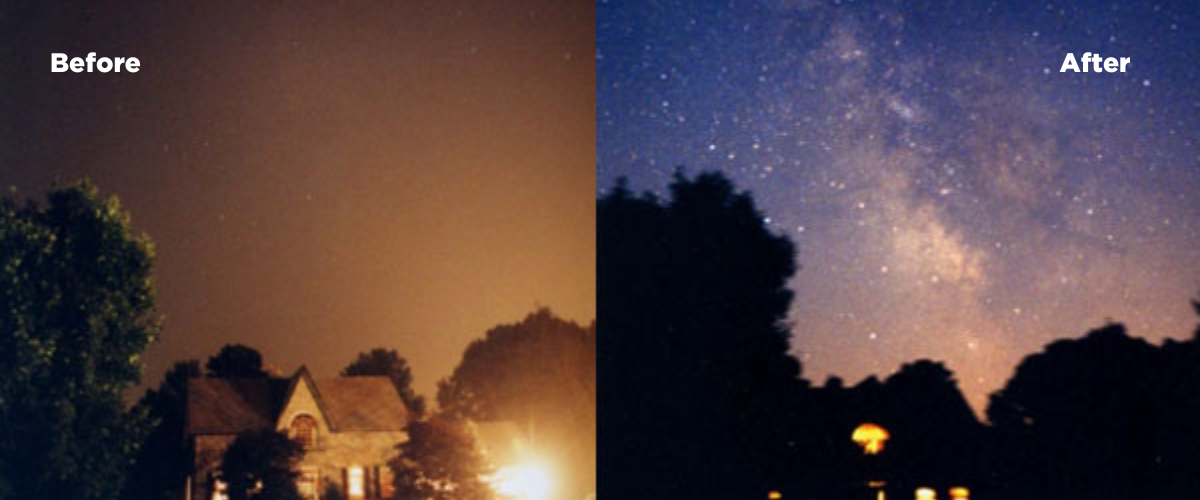
On January 17, 1994, an early morning earthquake hit Los Angeles, California, knocking out power to the entire city and affecting more than 3.5 million people. When the shaking stopped, and residents emerged to assess the damage, they were met by something so unexpected, so ominous, that the very sight of it caused a flood of calls to 911 unrelated to any physical effects of the quake. That apocalyptic sight? A shimmering band of light, known as the Milky Way, overhead. It is a spectacle that millions had never seen before that moment, and that millions more continue to miss out on today.
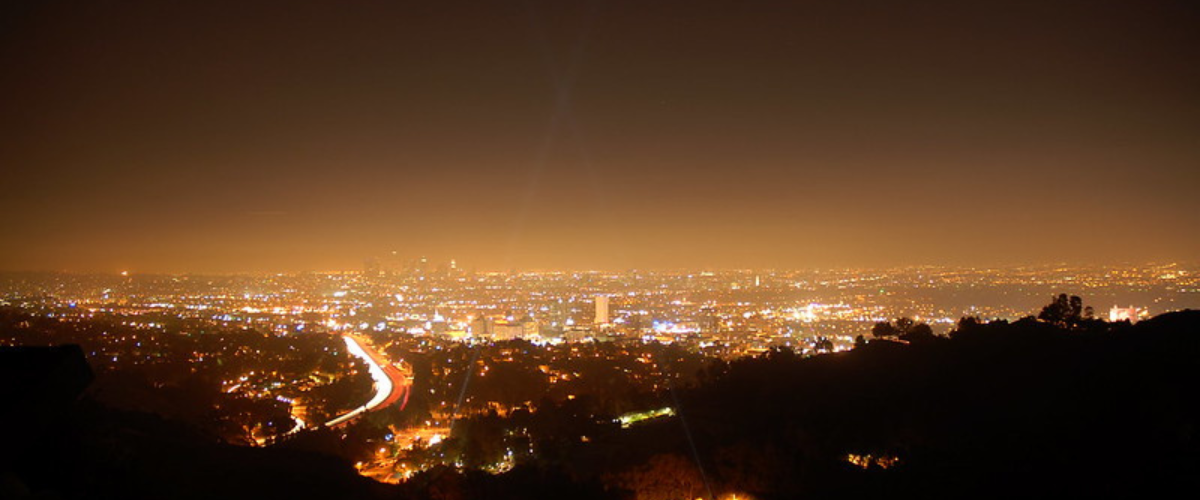
Light pollution is among the most chronic environmental perturbations on Earth. While true that light pollution may not be as toxic as, say, a chemical spill, it is reported that this is an issue that affects an estimated 99% of humans and animals across North America and Europe.
So, what exactly is light pollution? I’m glad you asked. Light pollution is an unintended side-effect of artificial lighting brought on by the growth of industrial civilization. Brightening of the night sky by artificial means has a disruptive, misdirected, and obtrusive effect on the natural cycles of life. This phenomenon takes on several forms, such as sky glow, the drowning out of the night sky in urban areas; light trespass, which is stray light being cast in directions where it was not meant to go; excessive brightness, or glare; and light clutter, which is large groups of confusing, bright light sources.
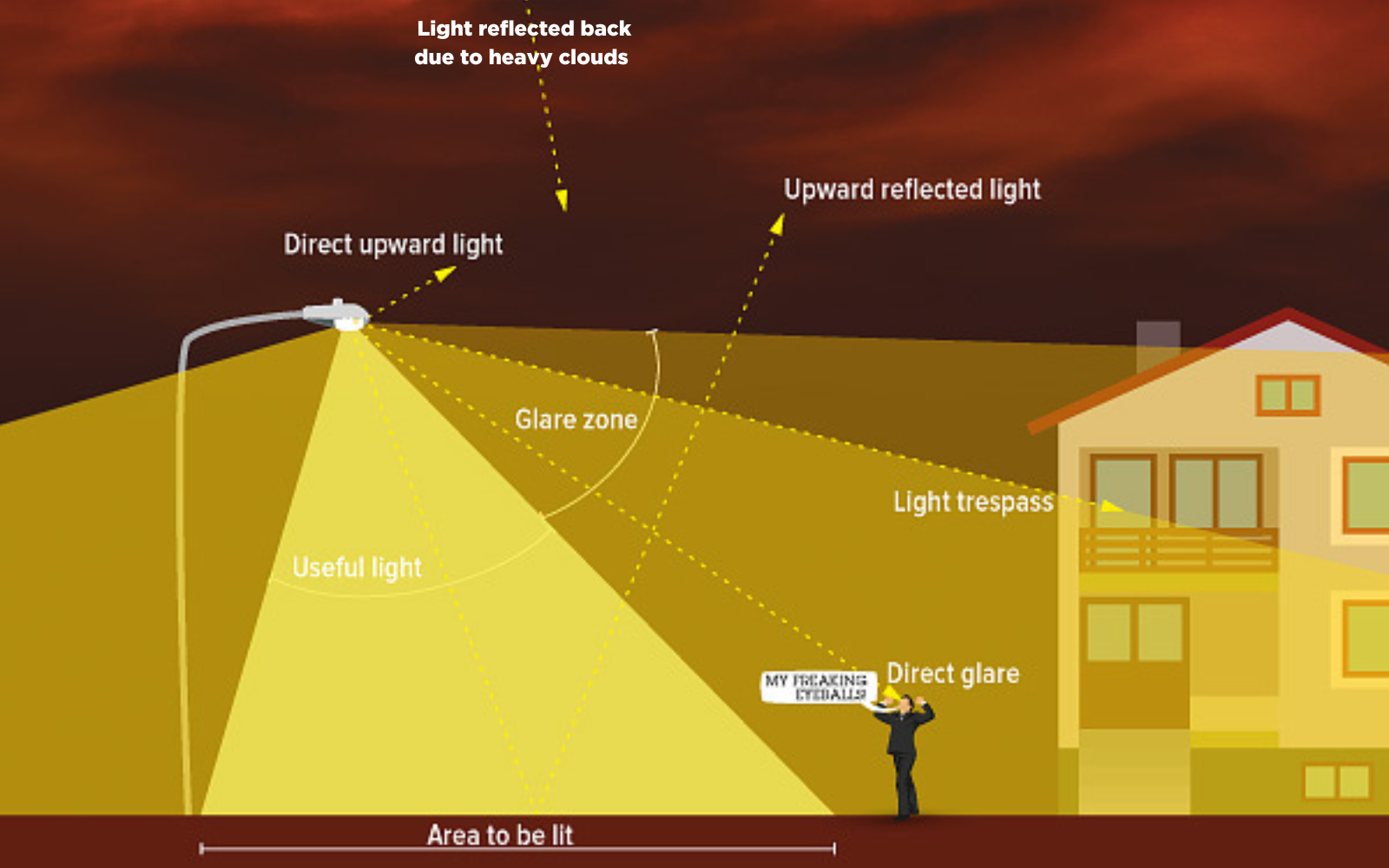
Those mostly affected by this issue are people living in more urban areas, obviously, but it is not only humans that are impacted by excessive light. In addition to the clear impacts that light pollution has had on the activities of humans after dark, there have been some serious consequences for nocturnal wildlife and their physiology, as well. Light pollution affects migratory patterns of all species, and alters the evolutionary dynamic between predator and prey. In effect, granting an advantage to prey not previously afforded to them, and to the detriment of many predatory animals’ well-being.
The adverse effects of light pollution on health have become more and more apparent over the years for both humans and animals, alike. As a species, humans rely upon our internal circadian rhythm to produce and release melatonin, a hormone which helps regulate our sleeping patterns. Like humans, many other species rely on this kind of cycle, as well. Light pollution, especially in relation to blue light, disrupts our ability to produce and release this necessary hormone, leading to irregular sleep patterns and other sleep disorders, fatigue, obesity, increased anxiety, and even some cancers.
Our physiology is heavily impacted by light pollution, as many biological cues are triggered by the religiously rhythmic ebb and flow from day to night. According to Richard Stevens, an epidemiologist at the University of Connecticut who has studied the links between light pollution and human health for decades, “nighttime physiology depends on dark. It does not depend on sleep. What we need [to stay healthy] is a longer period of physiological nighttime.”
In addition to the physical effects that the artificial interruption of light has had on our health, the psychological impacts of losing the nighttime is especially poignant, as well. Dacher Kelner, a psychologist at the University of California, Berkeley, says that the night sky may translate into more positive human behaviors. "Philosophers have written about how a big beautiful sky makes you feel like you’re part of something big, like it’s sacred, like it’s purposeful. By contrast, a smoggy sky that is closing in on you or a night sky that’s filled with pollution kind of weighs heavily on your consciousness.”

Furthermore, disruption of the night sky by man-made lights damages ecosystems and causes harm to animals whose life cycles are dependant on the dark. Nocturnal migrating birds, for example, are frequently killed as a result of glare in light-polluted areas. Light bouncing off of city buildings can be blinding and disorienting, causing birds to fly into windows and unseen structures, often tumbling hundreds of feet to the ground. If you live in a larger city with great buildings that reach into the sky or have facades covered in glass, think about how distracting it is on your morning commute when the sun hits those windows and shines back into your car. The blinding glare hitting your retinas makes it very difficult at times to see clearly. I know I am not the only one who has experienced something like this! For birds who travel at night, the effect of light glare is quite similar and often fatal. In North America, alone, millions of nocturnal migratory birds fall victim every year to this form of light pollution, which lure these animals into urban areas and to their deaths.
The good news, however, is that battling light pollution – and in effect salvaging our health and happiness, as well as preserving the lives of millions of nocturnal animals each year – is easily achieved! On the whole, we have already taken massive steps toward using more energy-efficient options in lighting, which has directly impacted our lives in innumerable ways. Our next focus should be on reducing the amount of unnecessary light output to further save on energy costs, and lower the levels of light pollution in our skies every night.
The city of Los Angeles recently replaced more than 150,000 streetlights with a comparable LED, saving the city roughly $8 Million annually. This equates to about a 60% savings on energy costs simply by switching from incandescent, halogen, or HID to LED. However, with the latest lighting revolution upon us, we are seeing an increase in light pollution affecting our planet to a degree never before experienced. Energy savings on lighting has led to overuse and over-illumination, casting light in directions that are inefficient and adding to the sky glow effect that contributes to the light pollution epidemic. Using dimmer, warmer colored lights and shielded LEDs could have a massive impact in the battle against light pollution, as well as even further improving on costs associated with energy consumption.
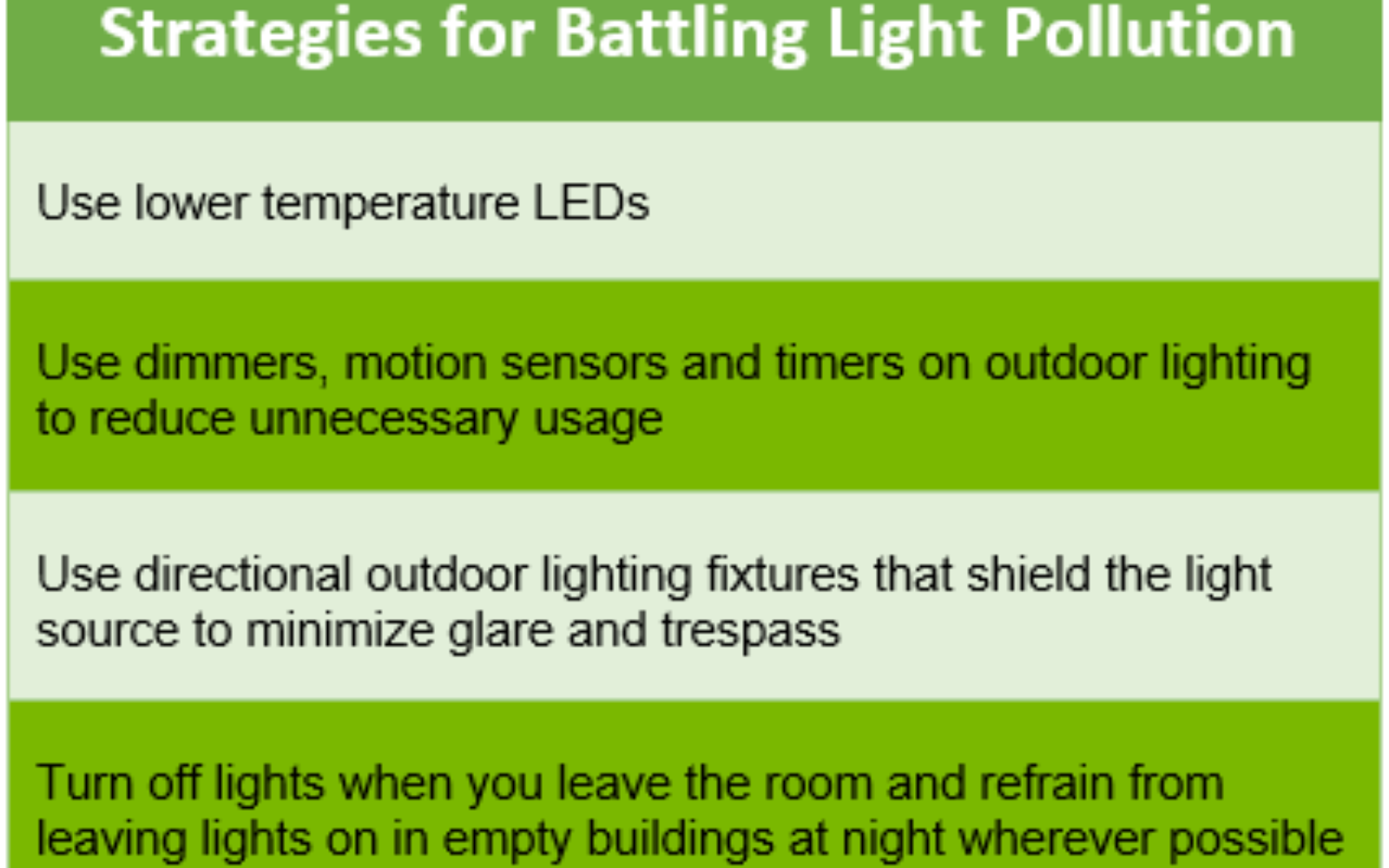

“Done well, LEDs could save the planet, in the sense of mining in light pollution,” astronomer John Barentine of International Dark-Sky Association said in an interview with National Geographic. “Done carelessly, it could be devastating.”
It is important to highlight the effects that artificial light has had on Earth, both good and bad. In many ways, the invention of the light bulb has catapulted us into the future. Electric lighting has allowed for the advancement of our species in ways that had never before been conceived. We have been able to explore the oceans and the skies, and literally deliver the known universe into the palms of our hands. Our expectations, now, are to use this technology responsibly and to help perpetuate the health of our planet for all the beings that call it home.
